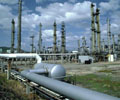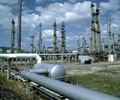[ad_1]

Russian President Vladimir Putin said June 17 that current high oil and gas prices are the result of US and European countries’ actions, at a time when sanctions are driving a major shift in Russian energy flows away from Europe to Asia.
Oil and gas prices have seen major volatility in 2022 after the US and EU significantly reduced imports as part of sanctions introduced in response to Russia’s invasion of Ukraine. Russia has also cut off gas supplies to some European countries after they refused to comply with new ruble payment terms.
Putin said that European energy prices started to rise in the third quarter of 2021 – before Russia’s invasion of Ukraine.
“We have absolutely nothing to do with it. They did it themselves, prices skyrocketed, ” Putin said, during the St Petersburg International Economic Forum.
European gas prices are up significantly on 2021 levels. Platts assessed the TTF front-month gas price at Eur120.35/MWh June 16, up 330% on the year.
He added that European customers buying Russian gas on the spot market pay more than those that have long-term supply contracts.
Russia favors long-term contracts as they give Russian companies guarantees that there will be a market for their output, facilitating investment in major, capital-intensive projects.
Export disruptions have led to Russia’s key crude grade Urals trading at massive discounts, but Russian Deputy Prime Minister Alexander Novak said that futures prices show that the discount on Russian oil is already narrowing.
“If we take futures, we see a long-term trend of a drop in the discount, and I think that as new supply chains are formed to reorientate energy resources to new markets, the discount will fall,” Novak said, in an interview broadcast on Russia 24 TV.
Differentials for Europe-bound Urals crude were last assessed by S&P Global Commodity Insights at a record discount to Dated Brent. Urals CIF Rotterdam was assessed at a $35.20/b discount to Dated Brent June 17, with CIF Augusta basis Urals cargoes assessed at a 30 cents/b premium, both unchanged on the previous day.
Europe-based traders are still absorbing the full effects of sanctions, including the EU’s ban on seaborne crude exports by the end of the year, as well as the ban on insuring ships carrying Urals to third countries.
However, in the Far East market, Urals has been trading firmer due to rising demand for the distressed grade. According to one trader, independent Chinese refineries are now paying ICE Brent minus $4/b for Urals cargoes delivered into China, compared with ICE Brent minus $6/b last month. A second trader said that, despite intense international sanctions, Urals continues to “find homes”.
Conversely, in the paper market, contract for differences derivatives for July Urals were trading softer at a $33/b discount to Dated Brent, down $1/b since the last trade, according to a broker.
Novak also said that Russia does not plan to introduce a ruble payment mechanism for Russian oil exports to sanctioning countries.
“No, not yet. We have one exporter in the gas industry, but we have many exporters in the oil industry. The market here is quite liberalized, so it is much more difficult to implement such a mechanism,” he said, during the Russia 24 interview.
From April 1, Russian countersanctions include a stipulation that European consumers should now use a ruble payment mechanism to purchase Russian gas. Several countries have been cut off for refusal to comply with the new rules.
The measure was introduced in response to seizure of Russian assets abroad. Putin said that this will further lead to a move away from currency reserves, as fears of asset seizures grow in governments across the world.
“In future years there will be a process of converting global reserves from currencies into resources,” he said.
Export growth
Despite disruptions in Russian exports to its traditional markets in Europe, Novak said June 17 that oil exports grew by 12% in the first five months of 2022.
“This means that our oil and oil products are in demand today around the world,” Novak said during the forum.
He added that the increase is linked to lower refining volumes and the reconfiguration of refineries in Russia. Russian refinery run cuts peaked in April, in the wake of the invasion of Ukraine, weaker domestic demand and falling exports.
Russian export growth is underpinned by demand among Asian importers for Russia’s heavily discounted crude.
Gazprom Neft CEO Alexander Dyukov said June 17 that Russia is already shipping 50% of its oil to Asia.
“At the beginning of the year, basically, three-quarters of our oil went to Europe, now more than 50% is supplied to the Asian market,” he said, during the forum.
To continue to meet demand at home and abroad, Russia is aiming to maintain oil production at around 500 million mt/year, Novak said on Russia 24 TV. This is equivalent to around 10 million b/d.
“This is the volume that will help us to supply the domestic market in full and maintain almost the same export potential for oil,” he said.
Russia’s 2021 daily average crude and condensate output rose by 2.4% on year to 524 million mt, or around 10.52 million b/d, in 2021, according to data released by the Central Dispatching Unit of the Energy Ministry on Jan. 2.
Source: Platts
[ad_2]
Source link








